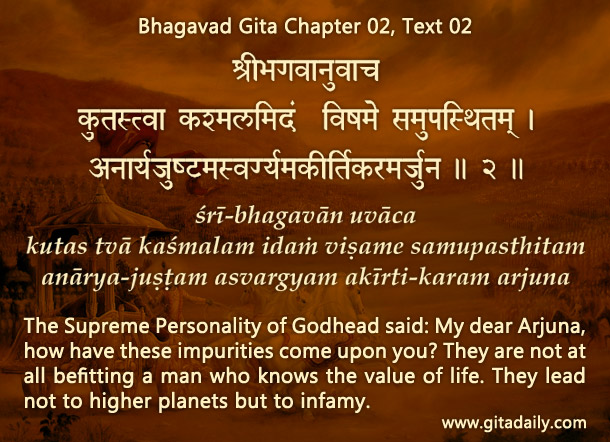Some people claim, “The Bhagavad-gita teaches that killing is ok because the body is anyway going to die. Such a teaching licenses indiscriminate violence.”
This is a straw man argument – the Gita sanctions killing not because the body is destructible, but because violence is sometimes necessary to protect dharma. The Gita teaches about the indestructibility of the soul and the destructibility of the body to ensure that Arjuna doesn’t deviate from his dharmic duty due to sentimentality.
Let’s understand the situation using an analogy of surgery. The straw man argument states that a surgeon’s cutting a patient is ok because the patient is anyway in pain. The Gita’s argument is that the surgeon’s amputating the patient is ok when it’s necessary to save the patient.
Applying the analogy to the Kurukshetra war, the patient was the social body and Arjuna, the surgeon. The Kauravas being infected by greed and envy were the diseased limb. As they had unscrupulously become heads of state and as people usually imitate their leaders, the Kauravas’ infection was likely to spread like an epidemic to all of society. The Kauravas’ incorrigible obstinacy in rejecting all peace proposals showed that their infection was incurable, making amputation the only way to save the social body.
Arjuna’s reluctance to fight was like a surgeon’s reluctance to operate. Krishna was like the surgeon’s mentor who encouraged the surgeon to overcome weak-heartedness. The Gita (02.02) indicated that such misguided weak-heartedness was unbecoming in a trained professional, be it a warrior or a surgeon. Hearing the Gita strengthened Arjuna. Thereafter, he (18.73) agreed not merely to fight but to do Krishna’s will. This indicates that he saw his impending duty not as violence, but as his role in manifesting Krishna’s benevolence for society’s long-term welfare.

Explanation of article:
Podcast:


Hare Krishna!!
Very nice explanation with good example.